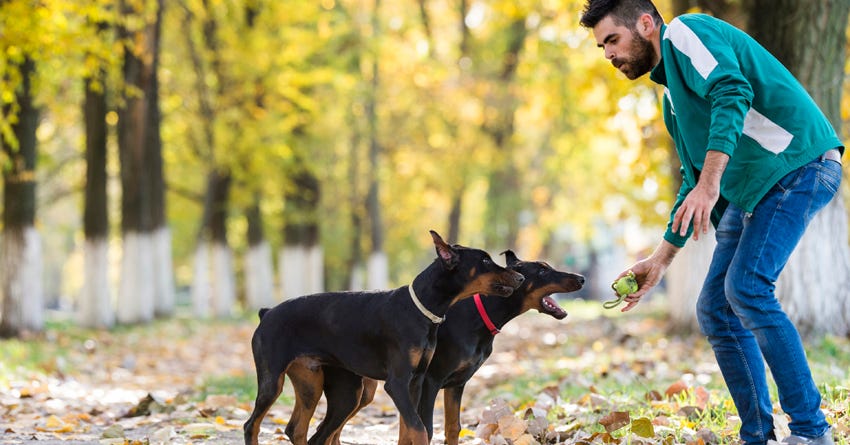Dog Training in Everyday Life

Dogs weren't domesticated thousands of years ago so they could be a pain in the neck.
They haven't been our working partners and companions for those thousands of years because they destroyed our belongings and barked enough that our neighbors complained. Instead, dogs have continued to keep us company, motivate us to get outside walking and helped us in many other ways because life is better with dogs. Dogs aren't born knowing how to live with us, however. They have no idea that leather shoes shouldn't be chewed even though they smell so good. They don't know that the scraps in the kitchen trash can are not for them. To live comfortably and safely with us, they need to be taught what the rules actually are. Unfortunately some dog owners avoid training. I think some are afraid it's like a boot camp. Granted, years ago it was much like that but thankfully, things change and dog training is no longer something to avoid. In fact, if you're doing it right, dog training is fun.Formal Dog Training
When most dog owners think of dog training, they tend to think of formal dog training: working with a trainer to learn specific skills. Those skills generally include the basic obedience exercises: sit, down, stay, heel and come. However, this is only the tip of the iceberg; there is much more than that available to dog owners today. Group classes usually consist of several dogs and their owners, a lead trainer (or instructor) and several assistant trainers. A good ratio is one instructor or assistant instructor to 3-5 students. The lesson plan usually includes the basic exercises plus exercises such as leave it (ignore that) and watch me (look at me). Many instructors also talk about problem prevention and solving. The benefit of a group class is that it is usually significantly less expensive than private training. The presence and actions of the other dogs and owners provide distractions for the dog to learn to deal with while learning to work with his owner. There is also often a feeling of group support when you attend with the same dogs and owners each week. The downfall of a group class is that there are many distractions—too many for some dogs. Many trainers also offer one-on-one training. When just you, the trainer and your dog work together, you're getting the trainer's individual attention and the lesson plan can be planned for you and your dog. This is the primary appeal for many dog owners. However, private training is more expensive than group classes. Behavior consultations that discuss your dog's unique issues you'd like to address are available from veterinary behavior specialists or behavior consultants. A plan of action is put together and discussed. There is usually a follow-up to answer your questions and address any issues that may come up as you implement the plan. Prices vary. Other options from various trainers might include board and train or walk and train, as well as plans developed for each individual and dog. There is an option for everyone. What's important is to find a training option that will suit you, your dog, your schedule and your budget. Formal training can teach you how to communicate with your dog, how to teach him what you want him to know, with a trainer overseeing your progress. But when those sessions end, that isn't the end of training. ©istockphoto/fotokostic
©istockphoto/fotokostic

